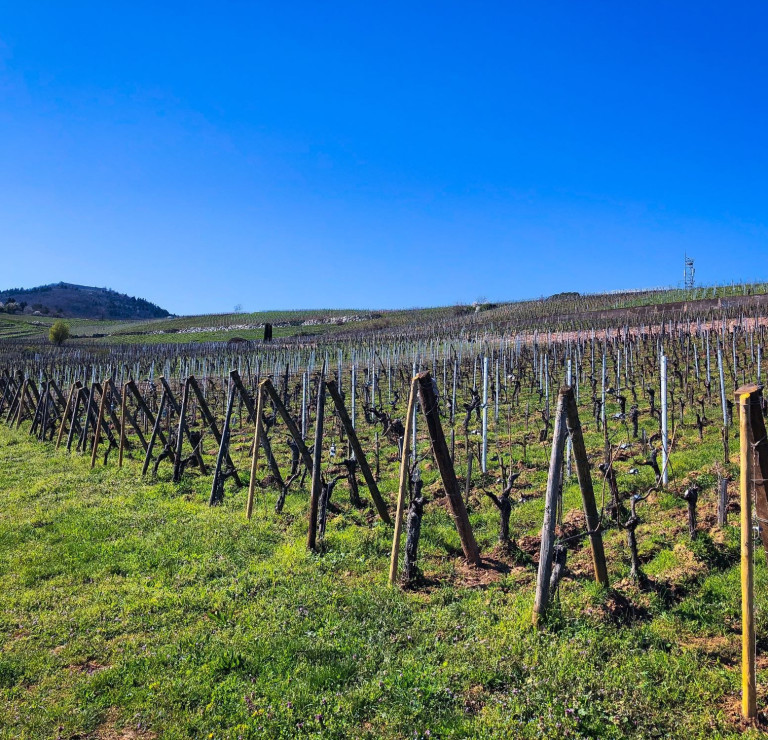
Technical presentation
| Bottling : | September 2005 |
|---|---|
| Acquired alcohol : | 16.2° |
| Residual sugar : | 4.0 g/l |
| Total acidity : | 2.8 g/l H2SO4 / (4.3g/l Tartrique) |
| pH : | 3.9 |
| Yield : | 33 hl/ha |
| Average age of vines : | 53 years |
| Terroir : | Grand Cru Hengst |
| Sweetness index : | 1 |
| Soil : | Calcareous Marl from the Oligocene period, South/South East facing, medium/steep slope |
Description of the wine Gewurztraminer Grand Cru Hengst 2004
The Hengst Grand Cru is located on the middle South South-East facing of the Rotenberg hill in the village of Wintzenheim. Only the two oldest vineyards (one planted < 1940 and the other one in 1957) are used in our Hengst bottling. The soil is made of very young calcareous limestone (Oligocen), with high pH and rich marl topsoil (about 30cm). This soil type is rich in minerals and stays actually quite cool, allowing the Gewurztraminer grapes to ripe to high levels, but quite slowly, and therefore helps to build a fabulous complex aromatic profile where spicy flavours dominate. The Hengst 2004 was harvested very healthy (Hengst rarely has high noble rot influence) and ripe. Fermented dry quite quickly, also a characteristic of this vineyard in some vintages.

Tasting notes
01/2006 : The nose shows strong spicy, leathery aromas. Again the aggressive calcareous character of this vineyard is responsible for a more austere, powerful, dry style of wine. The palate is very well structured, the fabulous acidity actually gives an elegant feel, even if the finish is powerful, dominated by an imposing minerality. Some air will slowly reveal delicate rose scent. It definitely needs more time!

The Hengst Grand Cru of Wintzenheim
The Hengst was first mentioned in the 9th century in an endowment of the Murbach Abbey. The lord of Haut Landsbourg as well as the bailiff of Kaysersberg shared the feudal rights up to the Great Revolution, whilst various noble families, abbeys and the bourgeoisie of Colmar exploited important parcels.